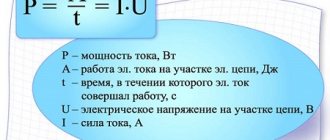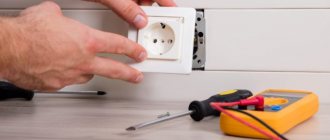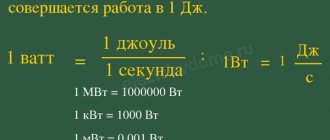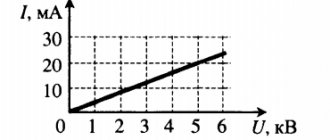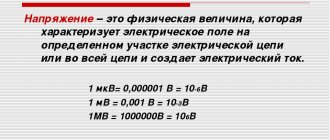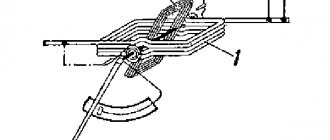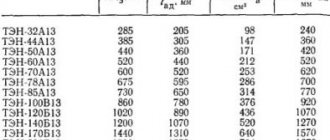What is electric power
Any physical action is performed under the influence of force. With its help, a certain path is followed, that is, work is performed. In turn, the work A done during a certain time t will amount to the power value expressed by the formula: N = A/t (W = J/s). Another concept of power is related to the rate of energy conversion of a particular system. One of these transformations is the power of electric current, with the help of which many different works are also performed. First of all, it is associated with electric motors and other devices that perform useful actions.
Current power is related to several physical quantities at once. Voltage (U) represents the work required to move 1 coulomb. The current strength (I) corresponds to the number of coulombs passing in 1 second. Thus, the current multiplied by the voltage (I x U) corresponds to the total work done in 1 second. The resulting value will be the power of the electric current.
The given formula for current power shows that power is equally dependent on current and voltage. It follows that the same value of this parameter can be obtained due to high current and low voltage and, conversely, at high voltage and low current. This property makes it possible to transmit electricity over long distances from sources to consumers. During the transmission process, the current is converted using transformers installed at step-up and step-down substations.
There are two main types of electrical power - active and reactive. In the first case, there is an irreversible transformation of the power of electric current into mechanical, light, thermal and other types of energy. The unit of measurement used is the watt. 1W = 1V x 1A. In production and in everyday life, larger values are used - kilowatts and megawatts.
Reactive power refers to the electrical load that is created in devices due to inductive and capacitive oscillations of the energy of the electromagnetic field. In alternating current, this quantity is a product expressed by the following formula: Q = U x I x sin (angle). The sine of the angle means the phase shift between the operating current and the voltage drop. Q is reactive power, measured in Var - reactive volt-ampere. These calculations help to effectively solve the question of how to find the power of an electric current, and the formula that exists for this allows you to quickly perform calculations.
Both powers can be clearly seen using a simple example. Any electrical device is equipped with heating elements - heating elements and an electric motor. For the manufacture of heating elements, a material with high resistance is used, therefore, when current passes through it, all electrical energy is converted into thermal energy. This example very accurately characterizes active electrical power.
As for the electric motor, there is a copper winding inside it that has inductance, which, in turn, has the effect of self-induction. Thanks to this effect, a partial return of electricity back to the network occurs. The returned energy is characterized by a slight shift in voltage and current parameters, having a negative impact on the electrical network in the form of additional overloads.
Capacitors have the same properties due to their electrical capacitance when the accumulated charge is given back. Here, the current and voltage values are also shifted, only in the opposite direction. This energy of inductance and capacitance, with a phase shift relative to the values of the existing electrical network, is precisely reactive electrical power. Due to the opposing effect of inductance and capacitance on phase shift, it becomes possible to perform reactive power compensation, thereby increasing the efficiency and quality of power supply.
The concept of electrical power and methods for calculating it
From an electrical engineering point of view, it is a quantitative expression of the interaction of energy with conductor material and elements during the flow of current in an electrical circuit. Due to the presence of electrical resistance in all parts involved in conducting electric current, the directional movement of charged particles encounters an obstacle along the way. This causes the collision of charge carriers, electrical energy transforms into other forms and is released in the form of radiation, heat or mechanical energy into the surrounding space. The conversion of one type to another is the power consumption of the device or section of the electrical circuit.
Depending on the parameters of the current and voltage source, power also has distinctive characteristics. In electrical engineering it is denoted by S, P and Q, the unit of measurement according to the international SI system is watts. Power can be calculated through various parameters of instruments and electrical appliances. Let's look at each of them in more detail.
Through voltage and current
The most relevant way to calculate power in DC circuits is to use current and applied voltage data. To do this you need to use the calculation formula: P = U*I
Where:
- P – active power;
- U – voltage applied to a section of the circuit;
- I is the strength of the current flowing through the corresponding section.
This option is only suitable for active loads, where direct current does not provide interaction with the reactive component of the circuit. To find power you need to multiply current and voltage. Both quantities must be in the same units of measurement - Volts and Amperes, then the result will also be in Watts. You can use other methods kV, kA, mV, mA, μV, μA, etc., but the power parameter will proportionally change its decimal value.
Through tension and resistance
For most electrical devices, such a parameter is known as internal resistance, which is taken as a constant for the entire period of their operation. Since domestic or industrial units are connected to a source with a known voltage rating, determining the power is quite simple. The active power is found from the previous relationship and Ohm's law for a section of the circuit, according to which the current in the section is directly proportional to the magnitude of the applied voltage and has inverse proportionality to the resistance:
I = U/R
If the expression for calculating the current load is substituted into the previous formula, you will get the following expression for determining the power:
P = U*(U/R)=U2/R
Where,
- P – load value;
- U – applied potential difference;
- R – load resistance.
Through current and resistance
There is a situation when the potential difference applied to an electrical device is unknown or requires labor-intensive calculations, which is not always convenient. This issue is especially relevant if several devices are connected in series and you do not know how the consumed electricity is distributed between them. The definition approach here is no different from the previous method; it is based on the basic statement that the electrical load is calculated as P = U×I , with the difference that we do not know the voltage.
Therefore, we will also derive it from Ohm’s law, according to which we know that the voltage drop on any section of a line or electrical installation is directly proportional to the current flowing through this section and the resistance of the circuit section:
U=I*R
after substituting the expression into the power formula, we get:
P = (I*R)*I =I2*R
As you can see, the power will be equal to the square of the current multiplied by the resistance.
Apparent power in AC circuit
AC networks are fundamentally different from direct current in that changes in electrical quantities lead to the appearance of not only an active, but also a reactive component. As a result, the total power will also consist of active and reactive energy:
Where,
- S – total power
- P – active component – occurs when electric current interacts with active resistance;
- Q – reactive component – occurs when electric current interacts with reactance.
Also, the components are calculated through trigonometric functions, like this:
P = U*I*cosφ
Q = U*I*sinφ
which is actively used in the calculation of electrical machines.
Rice. 1. Power triangle
What formula is used to calculate the power of electric current?
A correct and accurate solution to the question of what the power of an electric current is plays a decisive role in ensuring the safe operation of electrical wiring and preventing fires due to incorrectly selected cross-sections of wires and cables. The current power in an active circuit depends on the current and voltage. To measure current strength there is a device - an ammeter. However, it is not always possible to use this device, especially when the building design is just being drawn up and the electrical circuit simply does not exist. For such cases, a special calculation methodology is provided. The current strength can be determined by the formula given the values of power, network voltage and the nature of the load.
There is a formula for current power in relation to constant values of current and voltage: P = U x I. If there is a phase shift between current and voltage, another formula is used for calculations: P = U x I x cos φ. In addition, the power can be determined in advance by summing the power of all devices that are scheduled for commissioning and connection to the network. This data is available in technical data sheets and operating manuals for devices and equipment.
Thus, the formula for determining the power of electric current allows you to calculate the current strength for a single-phase network: I = P/(U x cos φ), where cos φ is the power factor. If there is a three-phase electrical network, the current strength is calculated using the same formula, only a phase coefficient of 1.73 is added to it: I = P/(1.73 x U x cos φ). The power factor depends entirely on the nature of the planned load. If you plan to use only lighting lamps or heating devices, then it will be one.
If there are reactive components in active loads, the power factor is already considered to be 0.95. This factor must be taken into account depending on what type of electrical wiring is used. If the devices and equipment have a sufficiently high power, then the coefficient will be 0.8. This applies to welding machines, electric motors and other similar devices.
For calculations in the presence of single-phase current, the voltage value is assumed to be 220 volts. If three-phase current is present, the design voltage will be 380 volts. However, in order to obtain the most accurate results, it is necessary to use in the calculations the actual voltage value measured with special instruments.
Electric power. Power triangle.Today we will talk about electrical power, what it is, its types and how they differ. Let's start with a definition.
Electric power is a quantity characterizing the speed of transmission (conversion) of electricity. Accordingly, if power is the speed of conversion of electricity, then by analogy with calculating ordinary speed (for example, a car), to calculate it you need to put time in the denominator, and electricity in the numerator. Example - the electric kettle was turned on to boil water, in 6 minutes the meter “accumulated” 0.2 kWh, let’s find the power of the kettle: P = W / t
(P – active power, W – electricity, t – time), P = 0 .2 / (6/60) = 2 kW. If the hair dryer “consumed” the same amount of electricity in 9 minutes, then according to the same formula P2 = W2 / t = 0.2 / (9/60) = 1.33 kW. Please note that the kettle consumed the same amount of electricity, but in less time, which is why it is more powerful, that is, it has more power.
That? what we talked about in the previous paragraph reflects the physical meaning of the concept of “electric power”. Now let's talk about power from an energy perspective. Depending on the type of power, it can be measured in VA (Volt-Ampere) - apparent power, W (watts) - active power or VAR (Volt-Ampere reactive) - reactive power. By the way, despite the presence of proper names in the unit var, in the International System of Units (SI) it was decided to designate reactive power units with a small letter - var. So, apparent power, as the name suggests, expresses all the power transmitted or converted by an electrical installation. It is designated by the letter S
and is measured in Volt-Amps (VA).
Total power of a single-phase circuit S = U * I
, VA, 3-phase circuit
S = √3* U * I
, where U is linear voltage, I is phase current (this formula is applicable for a symmetrical load, for an asymmetrical load it is necessary to sum the power of each phases).
Active power is part of the total power and characterizes electrical energy converted into any other type of energy. For example, a fan converts electrical energy into mechanical energy, and a stove into thermal energy, etc. Active power is designated P and measured in W. Active power formula P = S * cos φ
, for a single-phase circuit
P = U * I * cos φ
, for a 3-phase circuit
P = √3* U * I * cos φ
, where U is line voltage, I is phase current.
Angle φ is the so-called phase angle (between current and circuit voltage) or power factor, it can vary from 0 to 1. In the case where cos φ = 1, active power can be expressed as P = I 2 * R
( remember the Joule-Lenz rule), in this case
P
= I 2 * R = S. There is also reactive power, which characterizes cyclic modes in electrical devices, or we can say that reactive power takes into account the loads created in electrical installations by energy fluctuations in alternating current circuits. Quite unclear, isn't it? Try to learn any of the definitions you like so that you can show them off in some smart conversation. This is where its usefulness ends. So, reactive power is denoted by Q, measured in var. It
is numerically equal to Q = S * sinφ
(1-phase circuits) and Q =
√3* U * I * sinφ .
To understand the connection between all types of electrical power, it is convenient to use their graphical representation (Fig. 1). This is the so-called power triangle. As we see S = √(P2 + Q2).
Let's give an example: Total power of the circuit S = 100 kVA, cos φ = 0.9. Find active and reactive power. Solution: if the cosine φ is equal to 0.9, then the sine is equal to sin φ = 1-0.92 (basic trigonometric identity) = 0.436. Then P = 100*0.9, and Q = 100*0.436. We find P = 90 kW, and Q = 43.6 kvar.
Example2: A 3-phase asynchronous motor (rated voltage 380 V) has a rated electrical power of 15 kW, cos φ = 0.85. Efficiency is assumed to be 100%. Calculate the rated current of the motor for subsequent selection of the cable line. Solution I = P/(√3*U* cos φ) = 15/(1.73*0.38*0.85) = 26.8 A.
Vadim D. Volgodonsk, Rostov region.
What does current power depend on?
The power of current, various devices and equipment depends immediately on two main quantities - current and voltage. The higher the current, the greater the power value; accordingly, as the voltage increases, the power also increases. If the voltage and current increase simultaneously, then the power of the electric current will increase as the product of both quantities: N = I x U.
Very often the question arises, how is current power measured? The basic unit of measurement for this quantity is 1 watt (W). Thus, 1 watt is the power of a device that draws 1 ampere of current at 1 volt. A light bulb from a regular flashlight, for example, has similar power.
The calculated power value allows you to accurately determine the electrical energy consumption. To do this, you need to take the product of power and time. The formula itself looks like this: W = IUt where W is electricity consumption, the product IU is power, and t is the amount of time worked. For example, the longer an electric motor continues to operate, the more work it does. Electricity consumption also increases accordingly.
Electric power formula
How is the power of electric current measured?
Electric current power.
Radio engineering
04 April 2017
5856
Hello friends, let's continue!
Often, in everyday life, the concept of power source power, power consumption of household appliances and other electrical devices is used. This is especially familiar to many from a regular light bulb (incandescent lamp). These bulbs differ from each other in power (50 W, 100 W, 150 W, etc.) and, accordingly, in lighting.
In order to understand the power of a power source or consumed device, we will look at what electric power is.
Electric current power
The power of an electric current is the ratio of the work it produces to the time during which the work is done.
Let's now look at this definition. Let's assemble a simple electrical circuit.
hover or click to animate
As we already know, a certain number of charged particles flow through a circuit per unit time - this is an indicator of the current strength, the force also consumed to move the particles is the current voltage, but in addition to this, “work” is done during movement.
Here it is necessary to pay attention, “work” in this case can be different. In a conductor, this is heating, that is, electrical energy has turned into thermal energy. In consumed devices, that is, in the load, this can be lighting, heating, rotation of motors, etc.
Based on the definition of current power, we write the formula: P = W/t P - power of electric current (W) W - work of electric current (J) t - time of current flow (s)
The unit of power measurement is Watt (W), 1 W is the performance of “work” of 1 joule in 1 second of time.
Well, this formula is not entirely interesting to us. We need to understand how power is related to the quantities we know - current strength, current voltage and load resistance. Formula for determining the current power in a closed circuit: P = UI
Thus, the greater the voltage and current in the circuit, the greater the current power. I think this is understandable, since with a large current, more particles pass through the cross-section of the conductor and the load, thereby more “work” is done. Also with voltage, more force for the movement of particles, more “work” is done.
You can also derive different formulas:
to determine current power through voltage and resistance
to determine current power through current and resistance
We figured out what the power of electric current is. To make it even clearer, I recommend reading the following article. In which we summarize the section on the basics of radio engineering.
What is power consumption?
Power consumption is a numerical measure of the amount of electrical energy required for the operation of an electrical appliance or converted by it during operation. For static devices (stove, iron, TV, lighting), current energy turns into heat during operation). During conversion (electric motors), the energy of electric current is converted into mechanical energy.
The basic unit of electrical power is Watt, its numerical value
where U is voltage, Volts, I is current, amperes.
Sometimes this parameter is indicated in V×A (V×A for imported equipment), which is more correct for alternating current. The difference between Watts and VA for household networks is small and can be ignored.
Electrical power consumption is important when planning wiring (the cross-section of the wires depends on it, as well as the choice of ratings and the number of circuit breakers). During operation, it determines the costs of maintaining the home.
Determination of power consumption
Calculating electricity consumption by power can be done in several ways. They are described below.
Nameplate data
Over time, a generally accepted practice has developed - to indicate the technical parameters of household appliances on nameplates. To find out the power consumption, just read the data on the plate.
Nameplates:
Calculation by formula
Knowing the voltage in the current source (household outlet, batteries or accumulator) and the current that the device consumes, there is nothing easier than determining the power consumption of an electrical device. In this case, the calculation formula will look like this:
N = VxI. Where N is power (W); V—voltage (V); I - current strength (A).
Multimeter:
For example, using a multimeter in ammeter mode, they find out the current strength for which the electric saw is designed - 8.2 amperes. Since the equipment operates from a household power supply of 220 volts, it will be quite simple to calculate the power consumption of the saw: 220 × 8.2 = 1800 W = 1.8 kW.
Circuit for measuring current with a multimeter:
Measurement with a wattmeter
This is a universal way to calculate electricity consumption using such a device. Currently, it is quite easy to purchase it online in one of the Chinese online stores.
Wattmeter:
Wattmeter is a power meter for various electrical consumers. The device determines the power characteristics of a device for any purpose operating from a household electrical network. On its back there is a plug that is inserted into the socket. In the front part of the case, under the display, there is its own socket. The equipment under test is connected to it.
Using this tester is one of the ways to calculate the electricity consumption of any household electrical appliance. The power meter is a kind of bridge that connects the consumer with the current source. They take measurements over a certain period of time. Then you can calculate how much money a refrigerator or washing machine “spends”. The tester has a built-in battery, which is needed to remember previously obtained readings and calculate the monetary costs for consumed electricity. In other words, a wattmeter can be characterized as an individual electric meter that serves one electrical appliance.
Elimination method
With this method, the electric meter acts as a power meter. Let’s say that there is electrical equipment in the house that does not have a nameplate, the documentation for it has long been lost or did not exist at all. There is the easiest way to calculate electricity consumption - this is the elimination method. Proceed as follows: de-energize all appliances in the apartment or house, turn off the lights, and turn the block toggle switches on the electric meter to the “Off” position. except one.
Taking electric meter readings:
The desired device is turned on for as long as possible. The amount of electricity consumed for 1 hour should be recorded. If circumstances do not allow this, then switching on is carried out within a time period that is a multiple of 60 minutes.
For example, if the equipment worked for 10 or 20 minutes, then the result is multiplied by 6 or 3 accordingly. If the device consumed 800 W within an hour, this means that its power is 0.8 kW/h. If you display the average number of operating hours of an electrical consumer per month, you can determine the costs that this equipment brings. To do this, the indicator is multiplied by the cost of 1 kW/h.
Power consumption calculator
You can use an online calculator as a power meter. One of its options can always be found on the Internet. The main purpose of the network service will help you determine the power of all electrical consumers located in a house, apartment or office. The results obtained are indicative in nature, but with their help you can calculate the electricity consumption of different types of consumers.
Using the calculator, homeowners can calculate future energy costs. Knowing the weak points in the overall picture of energy consumption, you can optimize the operating mode of the main electrical appliances. This can bring significant savings to the family budget.
The calculator is easy to use. The relevant data about lighting devices is entered into the interface windows - the power and number of lamps of different types, then information about electrical appliances is entered: a refrigerator, a TV, a washing machine and other household appliances, a computer, related office equipment and various power tools. After this, the current electricity tariff is entered into the “Cost of 1 kW” window. By clicking the “Calculate” button with the cursor, you get the estimated value of energy consumption for the month, as well as the amount to pay for electricity.
Informative way
There is a lot of information on the Internet about the capacities of various household appliances. Homeowners know and can compile a list of electricity consumers indicating their average power taken from the network. Residents can also count a certain number of operating hours of devices per day. From here the final result of electricity consumption for the month is obtained.
For power plants (this includes equipment with electric motors), a correction factor of k = 1.2 should be introduced, taking into account the sharp increase in starting power. The following table shows a standard list of household appliances. It may differ significantly from the list, which will include homestead equipment - these are machines, pumps, lawn mowers and much more.
Average power of household appliances:
After reading this article, it becomes clear what the power consumption of electrical appliances is and how it can be calculated. The accuracy of any calculation of electricity costs is verified by the bill of the local electricity company. If there is a significant discrepancy in the results, it is necessary to reconsider the methodology for calculating the power consumption of all electrical appliances. You need to know that all calculation methods will not be accurate, but they will be able to tell you where you can save energy.
The problem of proper operation of the household electrical network
From a constructive point of view, the household electrical network has been developed to a high degree of perfection: its normal operation does not require special knowledge.
The network is designed for certain operating conditions, the violation of which leads to complete or partial failure, and in severe cases, to a fire.
The condition for proper operation is the absence of overload.
At the same time, the load capacity of sockets and the consumption of equipment connected to them are measured in different units:
- for sockets this is the maximum permissible alternating current (6 A for traditional Soviet sockets of old housing stock, 10 or even 16 A for European-style sockets);
- connected equipment is characterized by power, which is measured in Watts (for powerful devices, larger units are indicated instead of Watts: kilowatts (1 kW = 1000 W), which allows you to avoid confusion with numerous zeros).
Hence the need arises:
- determining the relationship between power and current;
- finding the power of an individual electrical appliance.
The relationship between Watts and Amps is simple and follows directly from the definition of Watt above. The task is simplified by the fact that the voltage of a working household network is always the same (220 or 230 V). From here, power is always found along the current.
How to find electrical power
The basic unit of electrical power is the Watt. Electrical power can be found using the following formula:
Power formula
Let's look at the formula I gave above.
I (current) - the amount of electricity flowing at a certain point in time;
U (voltage) is the work done by the electric field to transfer charge from point A to point B.
And now in simple words: Two people (this will be our current) carry together one stone from point A to point B weighing 50 kg and spend energy on it (this is voltage), and one person carries a stone weighing 10 kg and also spends energy . People have the same weight category. If we transfer this data into our formula, we find out that two people have more power than one.
Let me give you some more formulas that can be used to calculate electrical power:
Power formula
Where: I - current, U - voltage, R - resistance
As you can see, there is nothing complicated, because we are considering direct current.
How to determine?
To solve the problem of finding power, you can use various methods. All of them are available for use even with knowledge of physics and electrical engineering at the school curriculum level.
More often, power is found by determining the current; sometimes you can do without intermediate procedures and determine it immediately.
We look at the technical passport
Typically, the power consumption is indicated in the passport or description of the device and is duplicated on the nameplate. The latter is located on the rear wall of the case or its base.
If there is no description, this parameter can be found on the Internet, for which you just need to search by the name of the device.
The power indicated by the equipment manufacturer refers to peak power and is consumed from the network only at full load, which is quite rare. The resulting difference is considered as a reserve. At the regulatory level, this reserve is determined through the power factor.
Ohm's law to help
The power of most household electrical devices can be fairly accurately estimated experimentally and by calculation using Ohm's law, known since high school. This empirical law relates voltage, current and load resistance R as:
P = U 2 /R. U = 230 V, and the resistance is measured by a tester. The following is a simple calculation using the formula P = 48,400/R W.
How to determine the power of the electrical network
The power of the electrical network, external or internal, is determined by these relationships - the magnitude of the current and the time of work performed for a certain unit of time. The operation of modern energy systems allows not only to generate, but also to transmit over a distance almost any power; the only question is the immediate need for it and the necessary resources for the production of electrical energy.
Thus, an ordinary consumer usually uses the power that is transferred to him by the electricity supplier in the amount of 5 to 10 kW. As a rule, this power is more than enough for the consumer to support his life and to operate all the necessary electrical household appliances. It is clear that energy-intensive production will require completely different power values, hundreds of orders of magnitude higher, to operate efficiently.
Direct current measurement
The methods of that group are characterized by higher accuracy due to the fact that they are based on direct measurement of current. There are two devices for performing this procedure at home.
Metering with current clamps
The most convenient to use are current clamps that do not require breaking the controlled circuit. Designed as a hand-held device with a measuring unit based on a toroidal core. To measure the current, the assembly is opened in the manner of pincer sponges, and then closed to cover the wire, Figure 3. The effective value of the current is determined by the change in the magnetic field, which is recorded by the Hall sensor.
Measurement with a tester
The second method is based on the use of a tester, which is switched to ammeter mode and connected to an open circuit. The difficulties of implementing this procedure using simple means make it little popular in practice. We also cannot discount the fact that some tester models do not have current protection and fail (burn out) if the range is incorrectly selected (current overload).
Types of electrical power
Based on the dependence of power on current and voltage, it follows that it can be obtained from high current and low voltage and, conversely, from low current and high voltage. This effect is used in transformer conversions, when electricity is transmitted over long distances.
Electrical power can be active or reactive. In the first case, there is an irreversible transformation of this power into another type of energy. To measure it, a watt is used, which is the product of a volt and an ampere. With reactive power, due to the appearance of inductance, the phenomenon of self-induction occurs. As a result, electrical energy is partially returned to the network. At the same time, the current and voltage values shift, causing an overall negative effect on the electrical network. This type of power is measured in reactive volt-amperes, consisting of the product of the operating current and the voltage drop.
